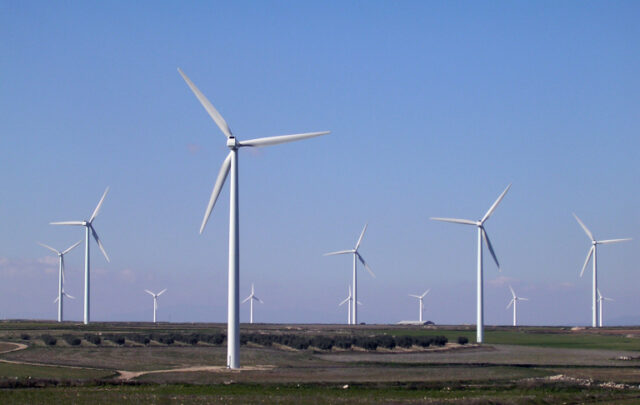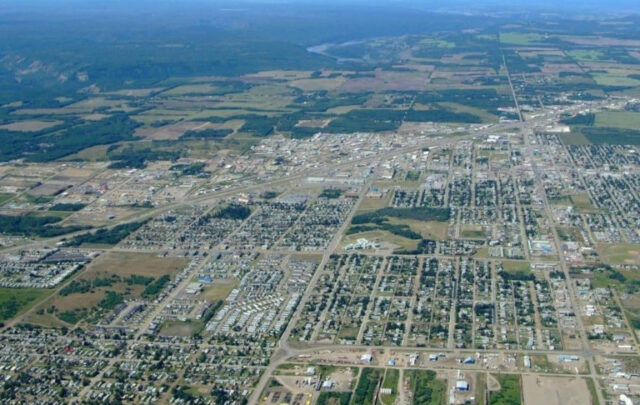The oil market is losing its shock absorbers.
It’s too early to celebrate the recent decline in oil prices after they topped $55 a barrel. None of the reasons that created the price spike — the strong thirst for crude in China and India, the dismemberment of the Russian oil giant Yukos, the terror strikes against oil facilities in the Middle East — has gone away. Like the hurricane season in Florida, the oil market may be facing even more violent storms.
The lesson from the recent price jump is that the oil market has too little wiggle room to deal with supply disruptions. We have been told for years that such disruptions could be offset by the spare capacity of the 11-member Organization of the Petroleum Exporting Countries — the ability of some producers, chiefly Saudi Arabia, to inject extra oil into the market when other suppliers falter.
This spare capacity has been the oil market’s main source of liquidity.
In 2002, spare capacity amounted to nearly 10 percent of the 76 million barrel-a-day global oil market. A year later, with demand climbing to 78 million barrels, spare capacity dropped to about 5 percent. This cushion was sufficient to prevent an oil crisis when a labor strike in Venezuela, ethnic riots in Nigeria and a war in Iraq took major producers out of the market for extended periods.
Now, mainly because of an increase in demand in Asia, OPEC is called on to supply more crude than expected, biting into its spare capacity, which has dropped to the dangerous level of 2 percent.
Despite Saudi Arabia’s reassurance that it possesses an immediately available spare capacity of 1.3 million barrels a day and is accelerating plans to bring new oil fields into production, this is all too little, too late. Demand for OPEC crude will rise by at least 2 million barrels a day by the end of next year, and production from new fields might take a long time to be brought online.
At the same time, no oil-producing country outside of OPEC seems to be willing to create new spare capacity by investing billions of dollars in oil infrastructure that would sit idle most of the time. At about $45 a barrel, oil countries prefer to cash in as many petrodollars by producing at full throttle.
As a result, the oil market today resembles a car without shock absorbers: The tiniest bump on the road can send a passenger to the ceiling.
Worse, seven of the world’s top 14 oil-exporting countries face some degree of domestic unrest. Any disruption — whether a terror attack against a major Saudi oil installation, sabotage operations by insurgents against Iraq’s southern pipelines, a violent clash in the Niger Delta, a business scandal in Russia or a new wave of protests in Venezuela — could send tremors through the global economy. Iran and Algeria also are considered unstable oil producers.
Even natural disasters — such as Hurricane Ivan, which caused the evacuation of oil-drilling wells in the Gulf of Mexico and cut U.S. oil production by at least a million barrels a day — could have a significant impact on prices in such a stretched market. [Last Thursday the federal government agreed to lend oil from the SPR to a handful of refineries to make up for the shortfall caused by Hurricane Ivan. The companies will be required to repay the reserve with oil once supply conditions return to normal].
Without liquidity, only one mechanism is left to bring the market to equilibrium: rapid and uncontrolled price increases.
But there is another way.
To compensate for the erosion in OPEC’s spare capacity, major oil consuming countries should take steps to insulate their economies from supply disruptions by creating liquidity mechanisms of their own.
At its current capacity of 700 million barrels, the U.S. Strategic Petroleum Reserve, or SPR, barely suffices to tide the U.S. economy over if there is a severe disruption of oil supplies.
If a further drawdown would be required to stabilize the oil market due to additional disruptions — only last week a rebel commander in Nigeria threatened to attack oil wells and pipelines unless the army halted an offensive there — it might be perceived by the public in these pre-election days as a political gimmick on President Bush’s part.
However, were the SPR expanded beyond its current capacity, and were Europe and Asia encouraged to establish similarly large oil banks, the SPR could serve as a liquidity mechanism to replace that of OPEC’s capacity.
While certainly costly in the short term, expanding each of the U.S., European and Asian strategic reserves to contain 1 billion barrels would have the long-term benefit of keeping the market liquid. The stored oil could be released at will to compensate for supply reductions.
An expanded SPR also would signal to OPEC that the oil weapon can no longer be used against oil-consuming countries.
There is much to be done to make the world less dependent on oil originating from unstable parts of the world by building more efficient automobiles and producing next-generation fuels to power them. But this will take many years.
In the interim, the world economy should not be at the mercy of oil kamikazes determined to go for its jugular and unstable countries.
Building a robust oil bank and managing it responsibly is the only short-term mechanism to bring about stability at gas stations.
Without such a mechanism, $50 a barrel for oil could well become a fond memory.
Gal Luft is executive director of the Institute for the Analysis of Global Security (IAGS)
Copyright 2004 Houston Chronicle





